The Coins and Currency of Modern North Macedonia
Tyler Rossi (The Republic of North Macedonia 2017-20) is currently a graduate student at Brandeis University’s Heller School of Social Policy and Management and studies Sustainable International Development and Conflict Resolution. Before graduating from American University in Washington D.C., he worked for Save the Children creating and running international development projects. Recently, Tyler returned to the US from living abroad in the Republic of North Macedonia, where he served as a Peace Corps volunteer for three years. Tyler is an avid numismatist and for over a decade has cultivated a deep interest in pre-modern and ancient coinage from around the world. He is a member of the American Numismatic Association (ANA).
•
Modern-day North Macedonia is a country of breathtaking natural beauty and ancient history that gained its independence in 1991 from the disintegrating Yugoslavia. A majority Slavic nation, North Macedonia has a rich monetary tradition stretching back through the socialist and royal iterations of Yugoslavia, medieval Bulgarian and Turkish empires, the Byzantines, the Romans, and beyond.
All of this layered history and natural beauty can be seen on the modern coinage struck at the former military arms manufacturing “Suvenir” plant in the village of Samokov two hours from the capital city of Skopje. Coin production began in 1993 before the earlier 1992 series of First Denar banknotes was halted in mid-1993. This first series of coins consisted of five denominations: 50 Deni, 1 Denar, 2 Denari, and 5 Denari. The coins were comprised of different nickel-silver alloys and a copper-nickel and zinc mixture – except the small 50 Deni coin, which was brass.
Struck only for a short period in 1993, 50 Deni coins were withdrawn indefinitely on January 1, 2013. These coins depict a seagull flying over water surrounded by the Cyrillic legend РЕПУБΛИКА МАКЕДОНИЈА, with the date 1993 below. The obverse, which is similar on all denominations, is very plain. The numerical denomination is half circled by 16 stylized sun rays and sits above the Cyrillic alphabetical denomination. This is representative of the ancient Macedonian Vergina Sun symbol.
Equal to half a denar, the 50 Deni coin weighs 4.05 grams and measures 21.5 mm. With a mintage of 11,051,000, the 50 Deni is comparatively rare and, due to its low value, was not used with any regularity before being decommissioned.

–
°
The 1 Denar coin was struck in batches during the years 1993, 1997, 2001, 2006, 2008, 2014, 2016, and 2020. This denomination has almost all the same devices as the 50 Deni, except there is a Macedonian sheepdog on the obverse. Called a Шарпланинац or Sarplaninac, these herding dogs are indigenous to the Shar Mountains in the northwestern region of North Macedonia and can grow to be quite large. All 1 denar coins weigh 5.1 grams and measure 23.8 mm.
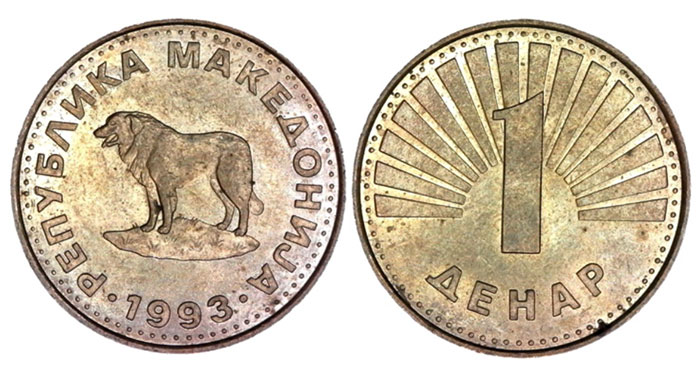
–
°
The two denari coin depicts an Ohrid trout, a fish indigenous to Lake Ohrid in the country’s southwest on the obverse, and the standard sunbeam pattern and denomination on the reverse. These coins weigh 6.2 grams and measure 25.5 mm.

–
°
With strikings in 1993, 1997, 2001, 2006, and 2008, the 5 denari coins are the last of the first category of North Macedonian coins designed by the engraver Biljana Unkovska in 1993. This coin follows the standard design elements of this series and has a Balkan lynx as the obverse wildlife. This denomination weighs 7.2 grams and measures 27.5 mm.

–
°
There are three circulating commemorative Food and Agriculture Organization (FAO) “50th anniversary” types struck in 1995: the 1, 2, and 5 Denari coins. Only slightly altered, the design is very similar to the standard circulating type. On the obverse, the country’s Latin name was added below the date, and on the obverse, the FAO logo and motto (in Cyrillic and Latin) replaced the stylized sunbeams above the denomination. While there were limited mintages, examples can still be found in circulation with some regularity.
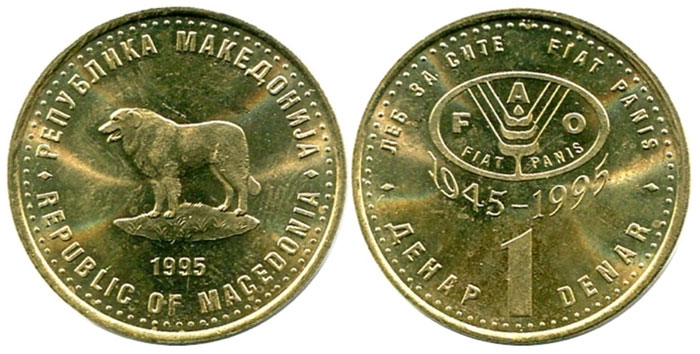


–
°
The two other 1 Denar circulating commemoratives were struck in 2000 to recognize the 2,000th year of Christianity. The first type has an ornamented orthodox cross on the obverse circled by the Latin legend “National Bank of the Republic of Macedonia” and has the date below. On the reverse, there is the reverse of a Byzantine follis surrounded by the same legend as the obverse, but in Cyrillic. The second type is a mule of the standard strike reverse with the stylized sunbeams and the “2,000 Years of Christianity” type’s obverse.
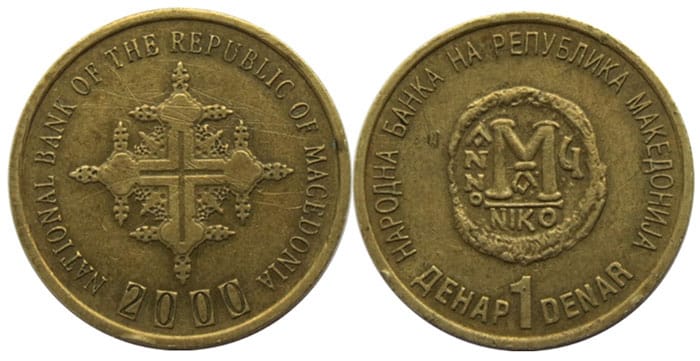
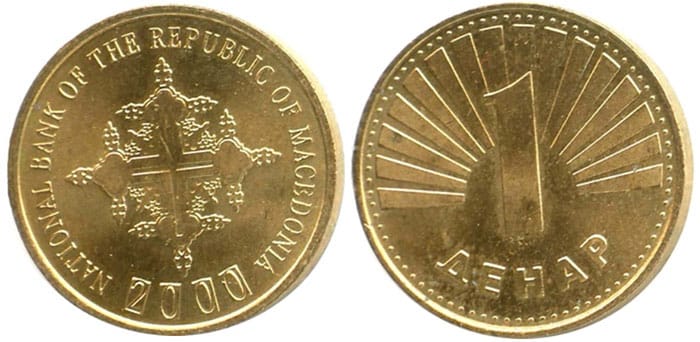
–
°
In 2016, the compositions of the 1 and 2 Denar coins were changed to brass and copper-plated steel. Two years later in 2018, after extensive negotiations with Greece and a tense national referendum, the country’s name was changed to The Republic of North Macedonia. The obverse of the 1 denar coin was changed to reflect this and now reads РЕПУБЛИКА СЕВЕРНА МАКЕДОНИЈА. This is the only denomination that has been changed to reflect the new name.
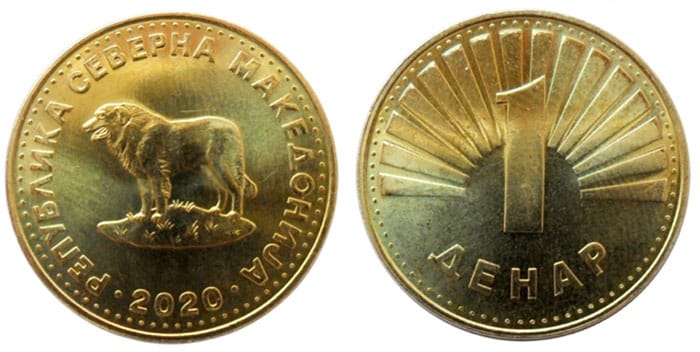
–
°
Departing from the trend of displaying indigenous wildlife, the 10 and 50 denari coins depict archeological religious imagery on the obverse while retaining the standard reverse designs. Both of these larger denomination coins were first struck in 2008, with the 10 denari struck again in 2017. Both denominations are nickel-brass alloy.
Both dates of the 10 denari coin are the same with a peacock with tesserae above circled by РЕПУБЛИКА МАКЕДОНИЈА and the date on the obverse. The peacock design is taken from a mosaic in the ancient sixth-century Roman ruins in the Stobi archeological complex. First discovered in 1924 by the Museum of Belgrade, Stobi (also called Stoboi) slowly grew until it became the capital of the Roman province Macedonia Salutaris until an earthquake destroyed the area in the sixth century. It is unsurprising that the peacock was used by a Catholic community since it represents the resurrection and is a symbol that represents the all-seeing Church and is a common image throughout the many monasteries in North Macedonia. This same design appears on the 10 denari banknote.
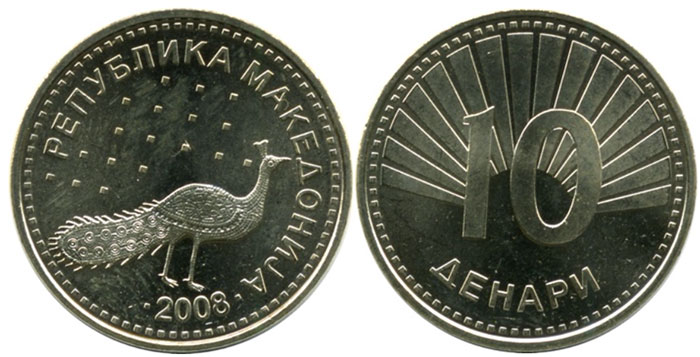
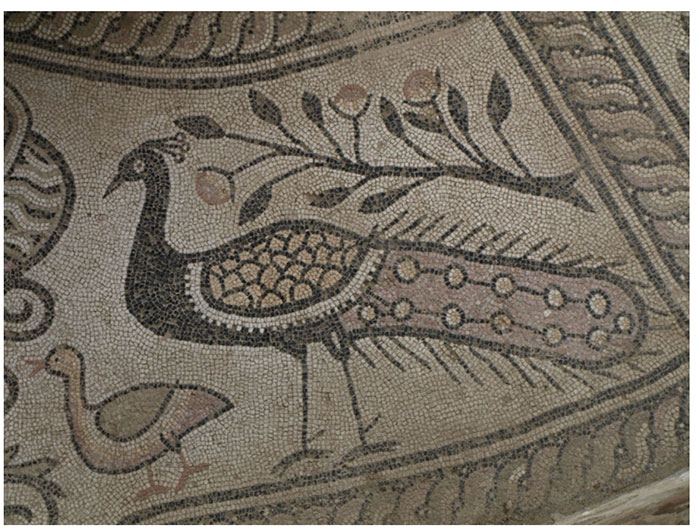
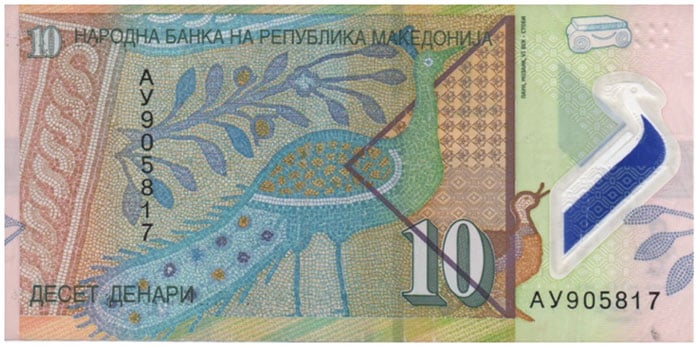
–
°
At its height in 69 CE, Roman Stobi was granted the right to strike coins with the legend Municipium Stobensium, which was later abbreviated to STOBI MVNIC, such as the example below.

–
°
Lastly, the 50 Denari coin obverse design features an illustration of the Archangel Gabriel taken from a fresco in the 12th-century church of San Gheorghi (Saint George) in the village of Kurbinovo.
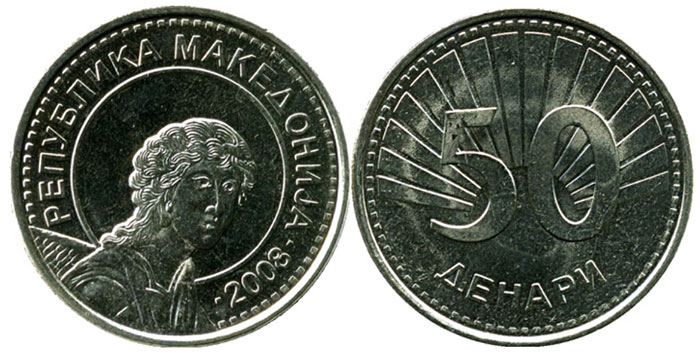
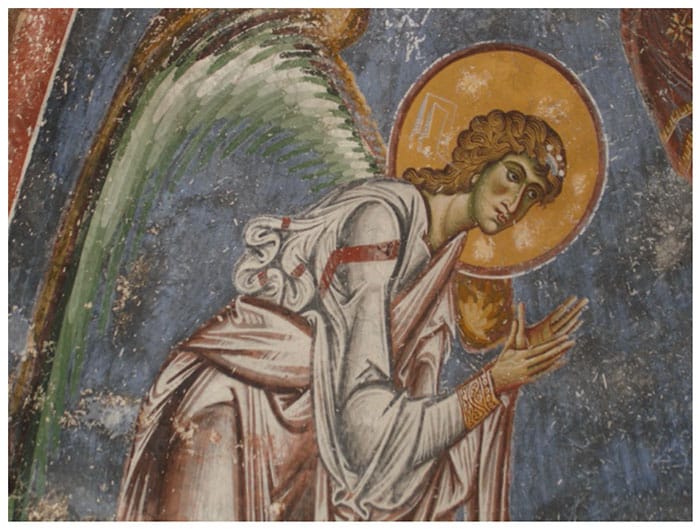
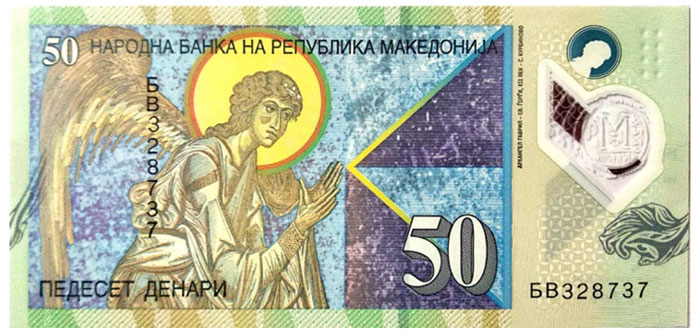
–
Happy Collecting!

No comments yet.
Add your comment